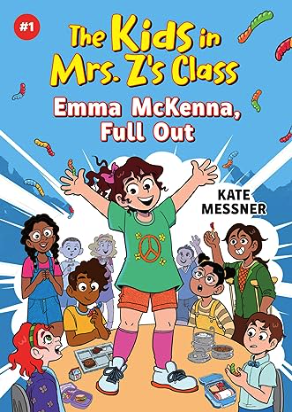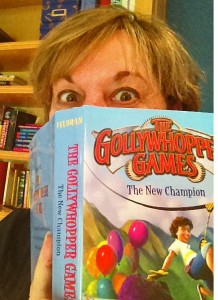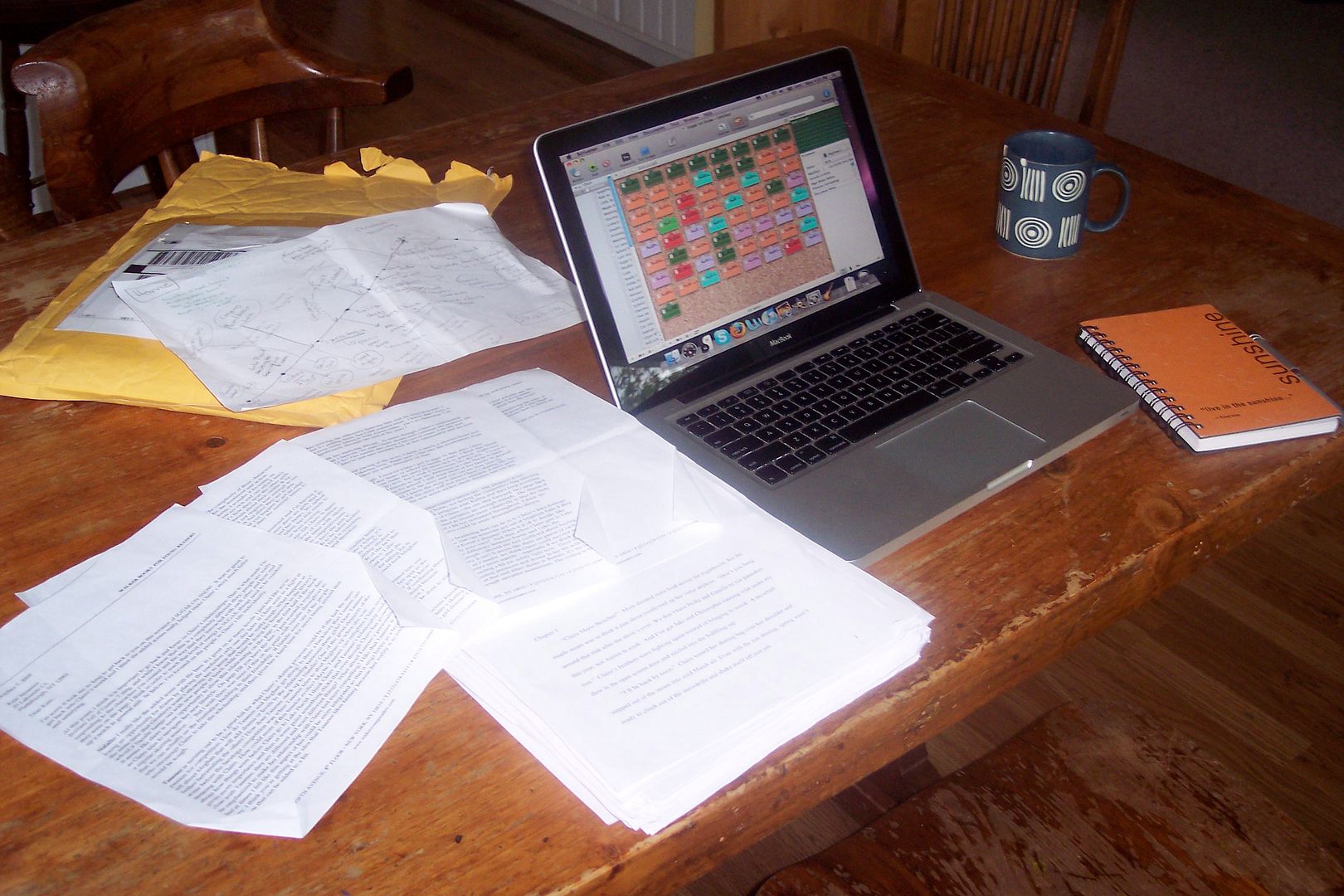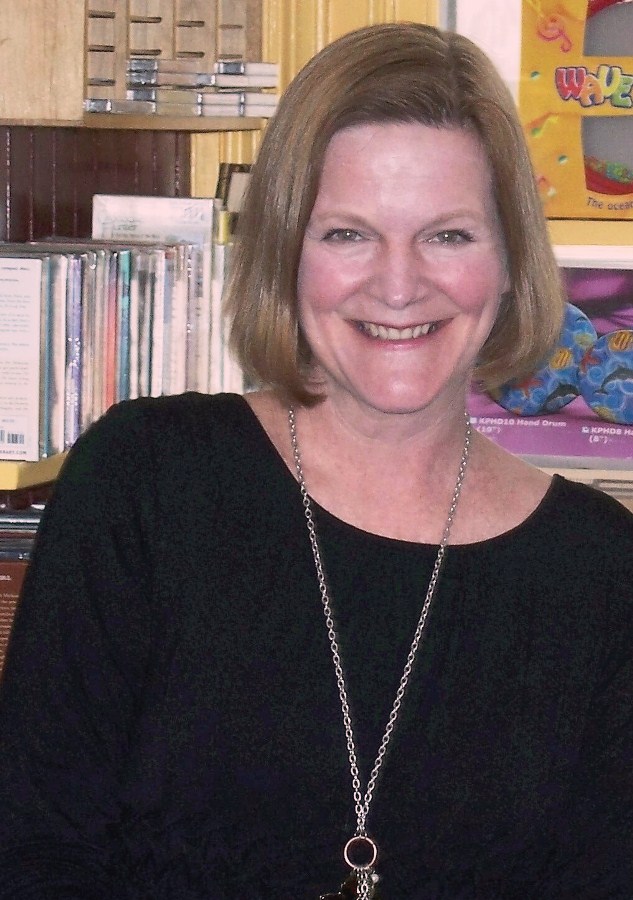Happy Friday, everyone! You’ll want to visit Gae’s blog for Friday Feedback today. Even if you’re not quite ready to share, it’s so interesting to see what others are sharing and how it’s being critiqued. Check it out; you’ll learn a lot.
We also have a Friday Feature today – “Letting It Go,” with guest author Kat Yeh.
Kat grew up reading, doodling, and scribbling in Westtown, Pennsylvania. She worked for many years in advertising and sports marketing — while writing for herself in the wee hours of the night. She currently lives on Long Island where she can see water everyday and explore all the bay and harbor beaches with her family. She is the author of children’s books YOU’RE LOVABLE TO ME, Random House Books for Young Readers (2009), THE MAGIC BRUSH: A STORY OF LOVE, FAMILY, AND CHINESE CHARACTERS, Walker Books for Young Readers (2011), and THE TRUTH ABOUT TWINKIE PIE, Little, Brown Books for Young Readers (coming January 2015!), and THE FRIEND SHIP, Disney-Hyperion (coming 2016)!
Letting It Go
When it comes to writing, like the song says: Let it go.
I admit that the first time I heard this song, I wept a little weep.
Letting go is a hard thing for me. And in writing, it means two particular things.
Let it go.
First of all, it means to put away all plans. All lessons. All outlines. All preconceived ideas. Actually allowing yourself to write without a goal or destination. Do not ask Do I need to begin with a scene that establishes my protagonist’s motive? No. Let it go. Allow yourself to play. It’s during this loose, unstructured time that you just may discover the little jewels that become the heart of your story.
When I first began writing what would become my middle grade novel, THE TRUTH ABOUT TWINKIE PIE, I knew very little about it. Okay. Honestly, I knew nothing about the story or my main character. Zero. All I knew was I wanted to write a book about food. And family. And probably love. I had no plot. I had no outline. All I had was an idea. Kinda. I thought that Twinkie Pie would be a fun recipe to open a novel with. I’d never had it. I had no idea what the actual recipe was, but I liked the sound of it. So, I opened up a big blank document and just — let it go. I made up a recipe. I wrote without agenda. No rules. No judgment. No expectations. Whatever came out was written down. I wrote and wrote and wrote. I wrote a whole lot of terrible stuff that made no sense and did not live to see another draft. But in the middle of all that letting go, I also wrote these few lines. Here they are pulled directly out of those messy first pages — misspellings and all:
“…this way, the cherry juice gets all soaked up by the twinkies and the creamy centers turn this beautiful shade of pinky-red – just like revlons cherrys in the snow lipstick. That was my mom’s favorite lipstick shade and the only one she’d ever wear. Why, if she walked into a drugstore and they were out of Cherries in the Snow, she walk right out and down the street to the next store and the next and the next.”
I remember this moment, because I stopped dead in my tracks.
Something had happened.
I went back and deleted “mom” and changed it to “Mama.”
And, suddenly, I had a voice.
I saw that I had written about my main character’s mother in the past tense. With a little wistfulness and longing and pride. When I look back, I realize that the entire plot and heart of this story that I love so dearly came from a moment of writing where I didn’t plan anything. I just let go and wrote. That one line led to everything else. I honestly don’t think it would have happened if I had had a plan.
Then next part of Letting It Go is harder for me.
Let it go.
It means letting go of the ironclad grip I keep on the many, many crossbars and dead bolts that guard the way to my heart. See — right there — how dramatic I am? This is the kind of thing I usually like to keep behind the locked door. Letting go of what’s inside. It’s a hard thing to do when you are a deeply private person. And I know the story is not actually my own story. And I am not any of the characters. Nor have I had their experiences. But, this book. Oh, this book is so me and so my heart. And I’m not really sure how to tell anyone else how to let that part of you go — but I can tell you what I do.
I take a deep brave breath. And then I take what I’ve written to places that scare me a little. I put it all there on the page for the world to see and let it go….
Feelings of Not Fitting In.
Wishing I could reinvent myself
Wishing for Impossible things
I let go of how I’m just a big cheesy crybaby in love with love.
I let go of the weird quirky humor that I never think anyone else will ever get.
I let go of how I’m probably Too Much and so everything I write will probably be Too Much, but that’s just the way it is.
I let it all go and it’s out there now.
And what I thought was going to be a few years of my life spent writing a novel about food and family and probably love became something more. It became a lesson in learning how to Let It Go. Everyone has their own personal door with their varying degrees of dead bolt needs. These are mine. I encourage you to open yours.
As I find myself currently working on my second novel, I realize that I have not completely Let It Go yet. The crossbars and dead bolts are still in place and my heart is still safe from all heart-hurting things. But I know it will happen. Maybe today. Maybe tomorrow. Because I do not want to write a safe book that shows nothing of my heart. I’m going to Let It Go. After I take another deep brave breath.
Any minute now.
Note from Kate: I love this post and am bookmarking it. Also, I think you should all watch this now. Happy Friday!






















